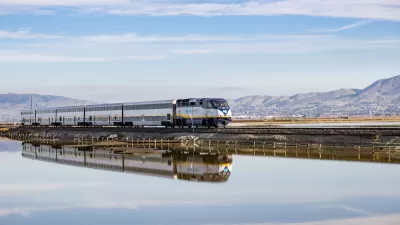A final, closer look on how our optimism can be our best quality and our biggest weakness.
I have a dream to become rich and famous. How will I do it? Easy. I will capture the world’s immeasurable demand for salmon marmalade. I believe people are willing to pay in excess of $10 a jar and I shall sell thousands upon thousands of these jars while making millions upon millions.
Care to invest?
The last article introduced the planning fallacy—a cognitive flaw whereby people replace the most likely outcome with the most desired; this fallacy can lead to plans that are built for unrealistic outcomes. When you consider my plan for world conquest via salmon marmalade, it’s somewhat obvious that I’m replacing the best-case scenario (wealth and fame) for the most likely (spectacular failure).
I’ve decided to write a bit more on this fallacy today because I’ve been thrilled by the responses from friends and colleagues alike. Many reactions begin with the following sentiment: “Hey, we can’t just be cold and realistic about everything; there must be some hope and optimism.” This was my own initial response after learning about the issue. As the idea settles deeper, though, everyone finds clever adjustments. Some have wisely pointed out that certain plans can have more aspirations than others; certain plans need bigger dreams. Comprehensive plans immediately come to mind. Likewise, some people have wisely observed that just because a plan is optimistic doesn’t mean it’s poorly designed. This is also true.
Here’s another truth: we are planners and, as such, we will always contain hope for a better future because we know how such a future can be achieved. Indeed, our natural biases are so deeply rooted in Making A Better Future that we will always subconsciously create optimistic plans even if we tried to consciously write them in the most callused, rational way. The danger of our tendency is that we can underestimate it and get drunk on the optimism. Thus, the lesson of the planning fallacy is that unregulated hope and optimism is a bad thing.
So again, we have an ingrained optimism bias. This is the same bias that allows smokers to believe that they will not get lung cancer. This is also a bias that causes us to believe that our most audacious plans will succeed. In both instances, the issue primarily comes down to a problem of “singular target focus”. We know our city; we know what it is capable of; we have firm belief that anything is possible. Motivated in this way, we develop a smart sequence of many actions that can achieve a full sprawl retrofit of a major corridor that will be complete in less than 10 years!!
Sounds great, right? In one way, it is. But the problem is that our “singular target focus” leads us to obsess so intently on our internal target (the major corridor) that we forget the external factors (economy, politics, your boss) fighting against it. We basically write the plan by asking ourselves “how can this work?” without also asking “how can this fail?”
We fail to apply “probabilistic thinking”.
And why do we fail to apply probabilistic thinking? Because we make a plan that makes sense to us.
Here’s a word of advice: just because something makes sense doesn’t make it real. Or even likely.
My plan for world domination via salmon marmalade sounded ludicrous. As a result, you—dear reader—applied probabilistic thinking and immediately knew that my dream was silly.
Parents do the same thing all the time. Consider the young boy who tells his father that he wants to play in the NBA. The shrewd father smiles at the boy, proud of such ambition, but does he then allow the boy to drop out of school? Of course not. Even while the father encourages the son’s pursuit, he also makes sure the son does his algebra homework every night.
I’ll attempt to connect all of this.
Planners are the embodiment of confident hope for a better future. We have an optimism bias. And like a good father to his son, we don’t want to discourage the wonderful hopes and dreams that our community has. But we also don’t want them to overinvest their time, energy, and money in something that is unlikely to succeed.
The real danger for us isn’t so much that we might develop unrealistic plans. That is a problem but the real danger is that unrealistic plans can cause us to ignore other responsibilities. Going back to the NBA example, what if our hypothetical dad, upon hearing of his son’s wishes to join the NBA, devised a detailed, thoroughly-researched plan for how to make his son a professional athlete? And what if the plan was so beautiful … made so much sense … that the Dad then fully committed his son to that path by making him drop-out of school?
Compare this to a City that makes a bold plan for a “world-class downtown”, funnels all its money into the plan, and thus leaves its existing sidewalks and roads underfunded?
Any difference?
There can only be so many “world-class downtowns” just as there can only be so many players in the NBA. And while we can make great plans for accomplishing either goal (we’re planners, after all), the effort can be downright damaging if we don’t apply a bit of probabilistic thinking.
So as we make our next plans, remember again that the most successful plan is the one most likely to succeed. Take small steps, apply a heavy dose of probabilistic thinking, and focus on achieving a good first step instead of designing some grand vision. A vision of a “world-class downtown” is often more senseless than the idea of salmon marmalade.
And salmon marmalade could be tasty if done right.

Manufactured Crisis: Losing the Nation’s Largest Source of Unsubsidized Affordable Housing
Manufactured housing communities have long been an affordable housing option for millions of people living in the U.S., but that affordability is disappearing rapidly. How did we get here?

Americans May Be Stuck — But Why?
Americans are moving a lot less than they once did, and that is a problem. While Yoni Applebaum, in his highly-publicized article Stuck, gets the reasons badly wrong, it's still important to ask: why are we moving so much less than before?

Using Old Oil and Gas Wells for Green Energy Storage
Penn State researchers have found that repurposing abandoned oil and gas wells for geothermal-assisted compressed-air energy storage can boost efficiency, reduce environmental risks, and support clean energy and job transitions.

Updating LA’s Tree Rules Could Bring More Shade to Underserved Neighborhoods
A new USC study finds that relaxing Los Angeles’ outdated tree planting guidelines could significantly expand urban tree canopy and reduce shade disparities in lower-income neighborhoods, though infrastructure investments are also needed.

California's Canal Solar Projects Aim to Conserve Resources and Expand Clean Energy
California’s Project Nexus has begun generating electricity from solar panels installed over irrigation canals, with researchers and state agencies exploring statewide expansion to conserve water and boost clean energy production.

HHS Staff Cuts Gut Energy Assistance Program
The full staff of a federal program that distributes heating and cooling assistance for low-income families was laid off, jeopardizing the program’s operations.
Urban Design for Planners 1: Software Tools
This six-course series explores essential urban design concepts using open source software and equips planners with the tools they need to participate fully in the urban design process.
Planning for Universal Design
Learn the tools for implementing Universal Design in planning regulations.
Heyer Gruel & Associates PA
City of Moreno Valley
Institute for Housing and Urban Development Studies (IHS)
City of Grandview
Harvard GSD Executive Education
Salt Lake City
NYU Wagner Graduate School of Public Service
City of Cambridge, Maryland





























